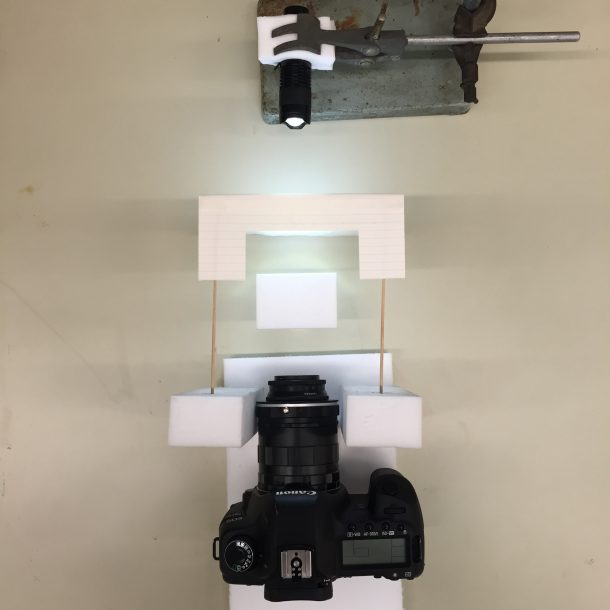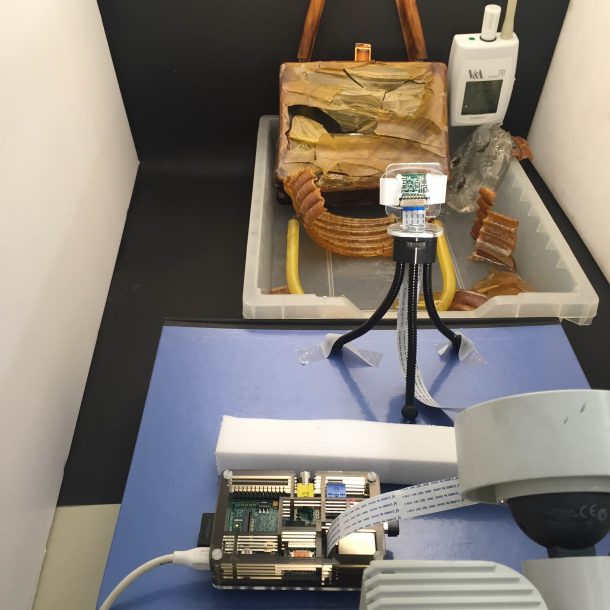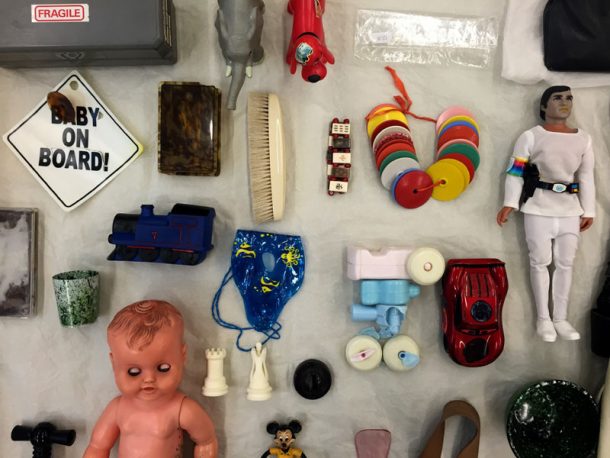Mark Kearney
V&A HLF Intern
Since 2006, The Institute of Conservation and Heritage Lottery Fund (ICON-HLF) funded internship scheme has been providing valuable opportunities to those wishing to join the conservation profession. The internships have provided two indispensable career-building ingredients to those entering the field – professional, real-world experience, and funding, in order to open the profession to as diverse a group of people as possible. I was fortunate to be chosen to undertake an internship during the final round of funding of the scheme.
My internship focused on the conservation of modern materials (plastics) – a relatively new and emerging discipline within conservation, more specifically, on repeating and expanding on some of the experiments conducted during ‘POPART: Preservation of Plastic Artefacts in Museum Collections’, a European Union funded project completed in 2012. Plastic objects are surprisingly vulnerable and require great care during cleaning in order to minimise the risk of damage. While the original POPART cleaning protocols formed a solid starting point, we felt that the reproducibility was low, while the systematic error and user subjectivity were too high to make concrete recommendations to conservators.
My work concentrated on assessing and refining a number of different cleaning methods of the original POPART project. Central to this was the premise that each method should be accessible to a bench conservator: the experimental setup should utilize little specialist equipment, require minimal training to perform, use only those materials that can be found easily within a conservation studio, and that the financial impact should be minimal.
One of the assessment criteria used by POPART involved measuring the contact angle of a liquid drop on the surface of the plastic. Contact angle is affected by cleanliness and surface texture, therefore any residue from cleaning or scratches should be identified by a change in the contact angle. To improve on the method used during POPART, we reimagined the experimental setup and utilized more advanced software. A Plastazote® stage was constructed for easier positioning of the camera between testing sessions and to help achieve consistent lighting (Figure 1). A DSLR camera was used with a 50 mm lens attached to macro extension tubes. This greatly improved the resolution of images captured compared to the original setup. A micropipette was used to accurately dispense the same volume of liquid each time. A free plugin, designed to measure the contact angle, for the image-processing program ‘ImagejJ’ is now used, which limits the subjectivity of the measurements.

Over the past year, I have been able to attend a number of in-house training days in addition to courses and conferences. These have allowed me to further increase my knowledge, and to network with other Museum professionals. I have also been able to carry out scientific analysis on a range of different types of objects from the V&A collection (Figure 2). This type of work has provided a fantastic opportunity to gain knowledge of different material types and their respective conservation issues (Figure 3). The model of this internship has given me a well-rounded level of experience and has enabled me to build upon my existing academic training. This will, hopefully, position me to take advantage of any arising opportunity in this sector.


Supported by the National Lottery through the Heritage Lottery Fund.


